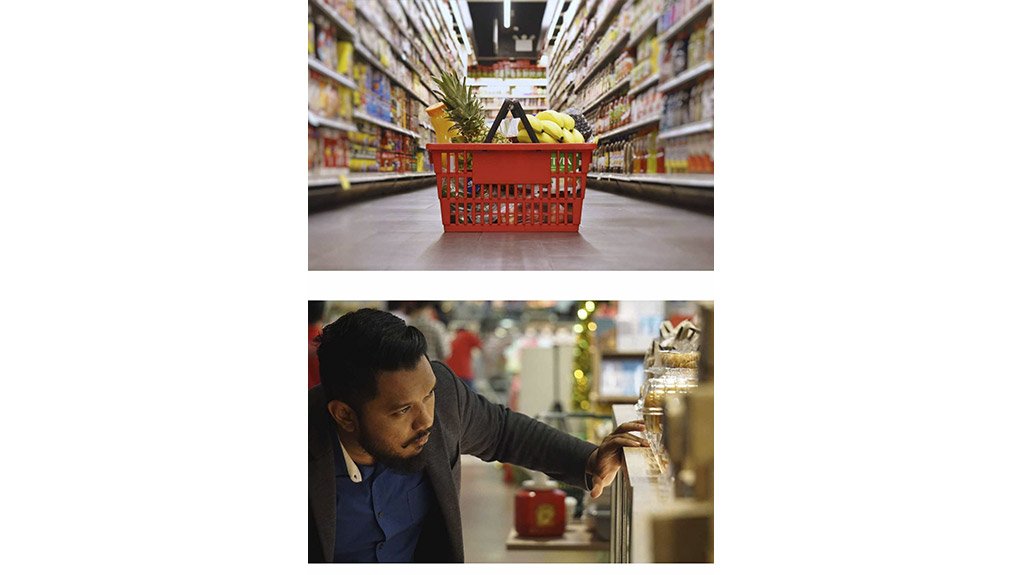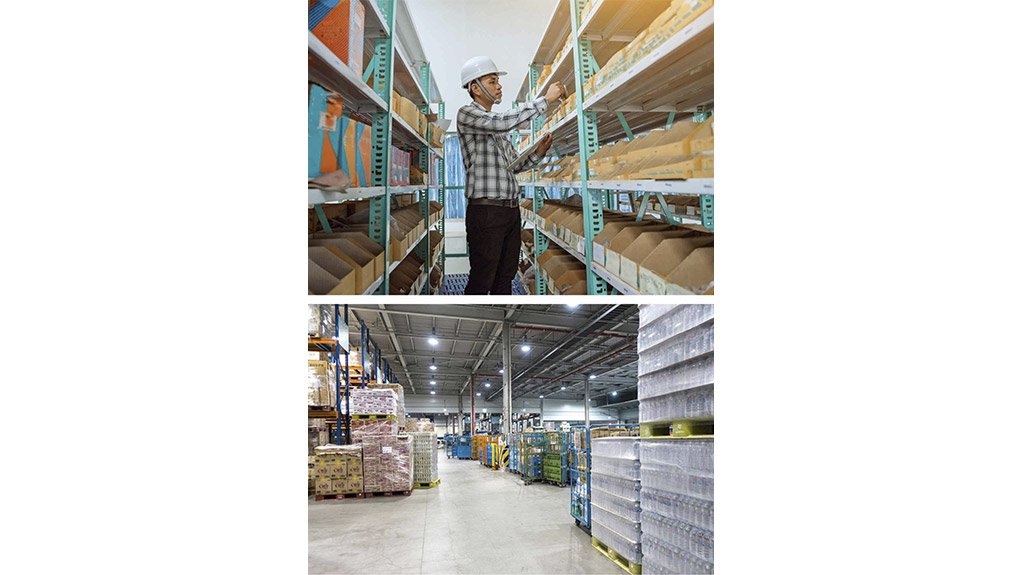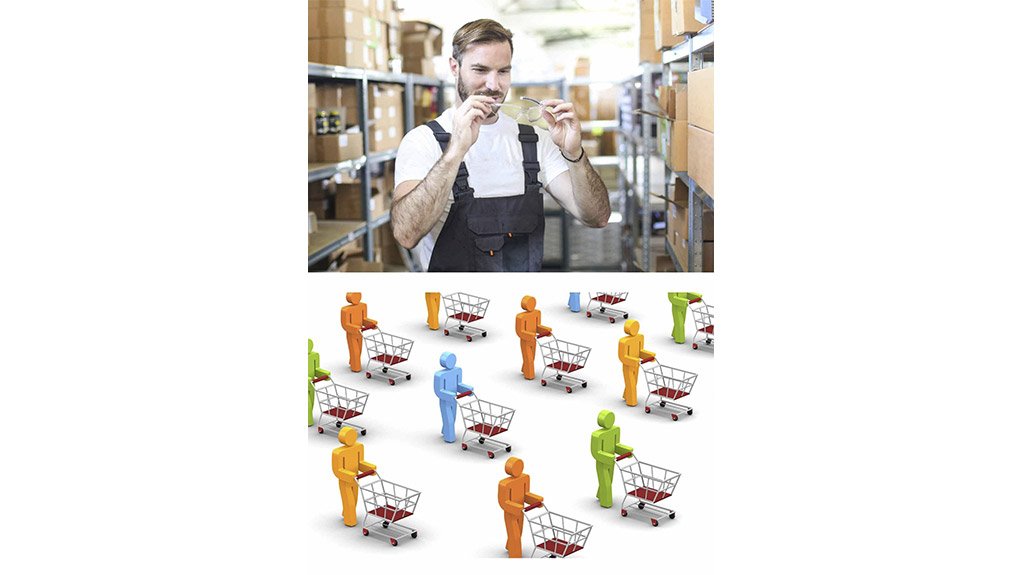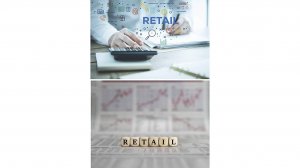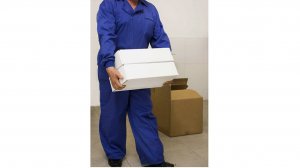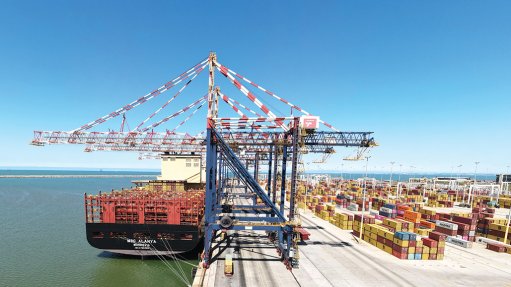Ensuring the safety and well-being of shoppers, staff & suppliers is non-negotiable
This article has been supplied as a media statement and is not written by Creamer Media. It may be available only for a limited time on this website.
The South African retail sector is the second largest employer in the country, second only to the Government. With roughly 800 000 people working in the retail trade industry, it is a legal requirement for employers to manage the health and safety aspects across the retail sector, from large distribution centres to self-employed shopkeepers.
“As in any workplace, it is important to identify, assess and control the potential hazards faced by employees, shoppers and suppliers,” says Pieter Potgieter, Health and Safety Manager at Afroteq Advisory - a multi-disciplinary integrated company that has been providing advisory and training services to the built environment sector since 2000. Afroteq Advisory is ISO45001 certified through its holding company AFMS and takes a holistic approach to occupational health and safety by proactively integrating health and safety into their operational practices.
The importance of health and safety in the retail environment
“South Africa’s Occupational Health and Safety (OHS) Act puts the responsibility of ensuring the well-being of all employees, visitors and contractors on the employer. In the retail environment, this onus rests on the centre owner who has to ensure that the common areas used by the public are safe, as well as look after the general safety and compliance of each store or shop within the centre. However, it is the responsibility of the individual store owner to ensure the health and safety of his or her employees and customers,” Pieter explains.
The general condition of the store must be maintained and in a good condition at all times. This includes display units, electrical installations, cashier points and shelves. Even a small fault on any item in store could result in a potentially dangerous incident that puts the safety of the public and staff at risk. Similarly, the day-to-day activities of the store must be completed in a planned and processed manner.
“For example, if the store has maintenance scheduled during business hours, it should be completed according to the implemented SOP’s, risk assessments and method statements. This will ensure that the maintenance teams take ownership of how they conduct themselves and that they work in a manner that does not have the possibility of causing harm to themselves or the public,” he says.
The most common hazards in the retail environment
Although hazards associated with the retail environment are often thought to be low risk, accidents remain common and can inflict significant extra costs on a business. Given its size and complexity, there are also a wide variety of potential dangers that need to be prepared for.
Explains Pieter: “The retail sector attracts a large number of people who enter the environment as shoppers, employees and suppliers. One thing we have learnt over the years is that is not always what we do, but how we do it, which causes accidents.”
The most common hazards associated with the retail sector include:
-
Manual Handling - The most common the cause of an accidents is manual handling such as the lifting of a heavy load, leading to back or musculoskeletal injuries.
-
Slips, trips and falls – Wet surfaces, stairs and steps (especially descending), vehicles (especially exiting vehicles), uneven walkways and surfaces, floor cleaning, entrances / exits and bathrooms are the places where slips, trips and falls most frequently occur. Nearly 50 % of all claims made against retailers in Ireland were caused by slips, trips and falls cases.
-
Workplace Vehicles - Forklift Trucks (FLT) are amongst some of the most hazardous vehicle types in the workplace, frequently found in warehouses, workshops and factories. The dangers associated with the use of lift trucks are often underestimated. Employees working with or around them often become complacent because lift trucks are quiet, busy, in frequent use and part of the environment. Lift trucks are very heavy, even when unloaded and there is very little protection for pedestrians. Crush and foot injuries are commonly suffered by pedestrians, whilst drivers tend to suffer injuries caused as a result of truck instability which result in the truck tipping over and crushing the driver.
-
Fire – The outbreak of fires pose a significant risk in the retail environment. Earlier this year, thirteen people were injured after they jumped out of windows at a mall in Durban after the building caught fire. A few months earlier, in October 2021, four people were killed and another was critically injured when a fire broke out at the Glenanda Shopping Centre, south of Johannesburg.
-
Lone Working – Lone workers work by themselves without close or direct supervision, such as where only one person works on the premises, e.g. in small workshops, kiosks, petrol stations or after hour shops; people who work outside normal hours, e.g. cleaners, security, special production, maintenance or repair staff; people who work away from their fixed base, e.g. plant installation, maintenance and cleaning staff, electrical repairs, lift repairs, painting and decorating etc. Hazards facing lone workers include accidents or emergencies arising out of the work, sudden illnesses, inadequate provision of rest, physical violence from members of the public and/or intruders.
The impact of COVID-19 on the retail environment
The COVID-19 pandemic has reintroduced the OHS Act as a vital part of any business, but most especially in the retail environment. While thousands of workers were told to stay home, grocery retail workers continued to go to work. Long shifts and extra workloads were introduced to keep up with demand, and in many cases retail workers reported that they did not have enough protective gear to deal with the hundreds of customers a day at the height of the pandemic. The recent health crisis highlighted not only the importance of workers at the forefront, but in many cases also the vulnerability of big retailers.
“When government unexpectedly announced the closure of beaches during the December holidays in 2020, bored holidaymakers flocked to local shopping malls for entertainment and relaxation. Even during a normal year this would have been a busy and taxing time for store owners as thousands of feet pass through their shops for Christmas shopping. The added responsibility of having to implement and maintain COVID restrictions such as social distancing and sanitizing protocols, resulted in the industry realizing the benefits afforded to them by partnering with professional OHS service providers such as Afroteq Advisory.
Lessons learnt from looting and riots in KZN and Gauteng
Another unexpected and cataclysmic incident that highlighted the importance of having a robust health and safety plan in place in the retail environment, was the recent looting and riots that took place in KZN and Gauteng in 2021.
“If the last two years taught us as South Africans anything, it is that a comfort zone is a dangerous place. We often heard companies and retailers say that they have been doing the same thing for the past twenty years. They rejected the idea of an OHS assessment and allowing us to draw up a personalized plan for them, because nothing has ever happened to them. Out of the blew and without warning the pandemic hit, followed by widespread looting a few months later. Only the businesses that took health and safety seriously prior to the pandemic, were ahead of the curve and able to resume their operations well ahead of their competitors and with minimal disruptions and losses suffered,” Pieter concludes.
Comments
Press Office
Announcements
What's On
Subscribe to improve your user experience...
Option 1 (equivalent of R125 a month):
Receive a weekly copy of Creamer Media's Engineering News & Mining Weekly magazine
(print copy for those in South Africa and e-magazine for those outside of South Africa)
Receive daily email newsletters
Access to full search results
Access archive of magazine back copies
Access to Projects in Progress
Access to ONE Research Report of your choice in PDF format
Option 2 (equivalent of R375 a month):
All benefits from Option 1
PLUS
Access to Creamer Media's Research Channel Africa for ALL Research Reports, in PDF format, on various industrial and mining sectors
including Electricity; Water; Energy Transition; Hydrogen; Roads, Rail and Ports; Coal; Gold; Platinum; Battery Metals; etc.
Already a subscriber?
Forgotten your password?
Receive weekly copy of Creamer Media's Engineering News & Mining Weekly magazine (print copy for those in South Africa and e-magazine for those outside of South Africa)
➕
Recieve daily email newsletters
➕
Access to full search results
➕
Access archive of magazine back copies
➕
Access to Projects in Progress
➕
Access to ONE Research Report of your choice in PDF format
RESEARCH CHANNEL AFRICA
R4500 (equivalent of R375 a month)
SUBSCRIBEAll benefits from Option 1
➕
Access to Creamer Media's Research Channel Africa for ALL Research Reports on various industrial and mining sectors, in PDF format, including on:
Electricity
➕
Water
➕
Energy Transition
➕
Hydrogen
➕
Roads, Rail and Ports
➕
Coal
➕
Gold
➕
Platinum
➕
Battery Metals
➕
etc.
Receive all benefits from Option 1 or Option 2 delivered to numerous people at your company
➕
Multiple User names and Passwords for simultaneous log-ins
➕
Intranet integration access to all in your organisation



